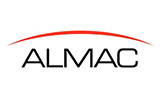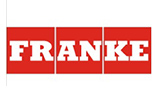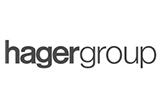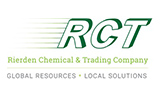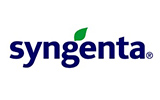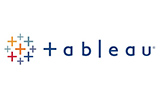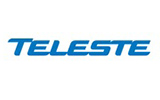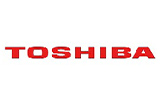1. Research Framework
1.1. Research Objective
1.2. Product Overview
1.3. Market Segmentation
2. Executive Summary
3. Middle East and Africa Chocolate Market Insights
3.1. Industry Value Chain Analysis
3.2. DROC Analysis
3.2.1. Growth Drivers
3.2.1.1. Rising Demand for Premium and High-Quality Chocolate
3.2.1.2. Growing Popularity of Dark Chocolate for Health Benefits
3.2.1.3. Innovation in Flavors and Product Varieties
3.2.2. Restraints
3.2.2.1. Health Concerns due to Overconsumption
3.2.2.2. Price Volatility of Cocoa
3.2.3. Opportunities
3.2.3.1. Expansion of the Chocolate Industry in Emerging Markets
3.2.3.2. Rising Consumer Preference for Organic and Sustainable Chocolate
3.2.4. Challenges
3.2.4.1. Ethical and Sustainability Concerns
3.2.4.2. Economic Downturns
3.3. Technological Advancements/Recent Developments
3.4. Regulatory Framework
3.5. Porter's Five Forces Analysis
3.5.1. Bargaining Power of Suppliers
3.5.2. Bargaining Power of Buyers
3.5.3. Threat of New Entrants
3.5.4. Threat of Substitutes
3.5.5. Intensity of Rivalry
4. Middle East and Africa Chocolate Market: Marketing Strategies
5. Middle East and Africa Chocolate Market Overview
5.1. Market Size & Forecast, 2025-2033
5.1.1. By Value (USD Billion)
5.2. Market Share & Forecast
5.2.1. By Product
5.2.1.1. Traditional
5.2.1.1.1. Dark
5.2.1.1.2. Milk
5.2.1.1.3. White
5.2.1.2. Artificial
5.2.2. By Distribution Channel
5.2.2.1. Supermarkets & Hypermarkets
5.2.2.2. Convenience Stores
5.2.2.3. Online
5.2.3. By Country
5.2.3.1. Saudi Arabia
5.2.3.2. UAE
5.2.3.3. Qatar
5.2.3.4. Kuwait
5.2.3.5. South Africa
5.2.3.6. Nigeria
5.2.3.7. Algeria
5.2.3.8. Rest of MEA
6. Saudi Arabia Chocolate Market
6.1. Market Size & Forecast, 2025-2033
6.1.1. By Value (USD Billion)
6.2. Market Share & Forecast
6.2.1. By Product
6.2.2. By Distribution Channel
7. UAE Chocolate Market
7.1. Market Size & Forecast, 2025-2033
7.1.1. By Value (USD Billion)
7.2. Market Share & Forecast
7.2.1. By Product
7.2.2. By Distribution Channel
8. Qatar Chocolate Market
8.1. Market Size & Forecast, 2025-2033
8.1.1. By Value (USD Billion)
8.2. Market Share & Forecast
8.2.1. By Product
8.2.2. By Distribution Channel
9. Kuwait Chocolate Market
9.1. Market Size & Forecast, 2025-2033
9.1.1. By Value (USD Billion)
9.2. Market Share & Forecast
9.2.1. By Product
9.2.2. By Distribution Channel
10. South Africa Chocolate Market
10.1. Market Size & Forecast, 2025-2033
10.1.1. By Value (USD Billion)
10.2. Market Share & Forecast
10.2.1. By Product
10.2.2. By Distribution Channel
11. Nigeria Chocolate Market
11.1. Market Size & Forecast, 2025-2033
11.1.1. By Value (USD Billion)
11.2. Market Share & Forecast
11.2.1. By Product
11.2.2. By Distribution Channel
12. Algeria Chocolate Market
12.1. Market Size & Forecast, 2025-2033
12.1.1. By Value (USD Billion)
12.2. Market Share & Forecast
12.2.1. By Product
12.2.2. By Distribution Channel
13. Rest of MEA Chocolate Market
13.1. Market Size & Forecast, 2025-2033
13.1.1. By Value (USD Billion)
13.2. Market Share & Forecast
13.2.1. By Product
13.2.2. By Distribution Channel
14. Competitive Landscape
14.1. List of Key Players and Their Offerings
14.2. Middle East and Africa Chocolate Company Market Share Analysis, 2023
14.3. Competitive Benchmarking, By Operating Parameters
14.4. Key Strategic Developments (Mergers, Acquisitions, Partnerships, etc.)
15. Impact of Escalating Geopolitical Tensions on Middle East and Africa Chocolate Market
16. Company Profiles (Company Overview, Financial Matrix, Competitive Landscape, Key Personnel, Key Competitors, Contact Address, Strategic Outlook, and SWOT Analysis)
16.1. Nestle S.A.
16.2. Mondelez International Inc.
16.3. Tiger Brands Limited
16.4. Chocoladefabriken Lindt & Sprungli AG
16.5. Mars Incorporated
16.6. Al Nassma Chocolate LLC
16.7. Cocoa Sampaka
16.8. Mirzam Al Quoz
16.9. Kees Beyers Chocolate CC
16.10. Barry Callebaut
16.11. Other Prominent Players
17. Key Strategic Recommendations
18. Research Methodology
18.1. Qualitative Research
18.1.1. Primary & Secondary Research
18.2. Quantitative Research
18.3. Market Breakdown & Data Triangulation
18.3.1. Secondary Research
18.3.2. Primary Research
18.4. Breakdown of Primary Research Respondents, By Region
18.5. Assumptions & Limitations
*Financial information of non-listed companies can be provided as per availability.
**The segmentation and the companies are subject to modifications based on in-depth secondary research for the final deliverable


